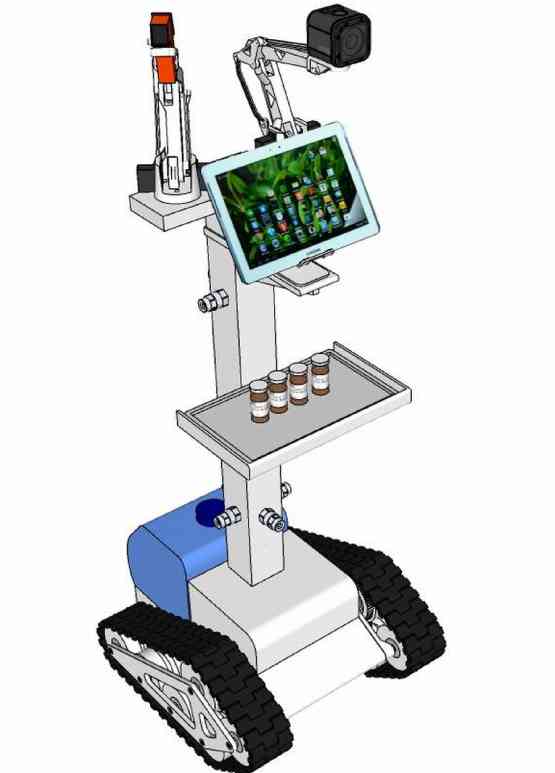
ROBOT DOC A robot roving doctor put together by scientists of the Bulacan State University. —PHILIPPINE INFORMATION AGENCY IMAGE
CITY OF MALOLOS—Robot doctors in Bulacan and ultraviolet rays in Tarlac have been tapped in the war against the new coronavirus disease (COVID-19) as authorities pin their hope on the use of technology to reduce transmission.
The robots allow medical workers to keep tabs on the health of patients from a distance. Called Rovidocs (robot roving doctors), the devices are designed by information technology professors of the Bulacan State University (Bulsu).
Three Rovidocs have been commissioned by the provincial government for the centralized quarantine facility that will be put up at the Bulacan Medical Center.
Dr. Rawland Dave Domingo, the hospital director, said the units will reduce exposure to patients.
Each unit, which costs P150,000, will be outfitted with a camera, a thermal scanner, trays and nozzles and Servo arms (articulated metal arms that can be controlled remotely), said Jayson Victoriano, director of the Bulsu Institute for Innovation in Business and Emerging Technologies.
The robots can make sure medicine is delivered on time and will monitor the hourly status of each patient.
Dr. Reynaldo Naguit, chancellor of Bulsu external campuses, said Rovidocs heeded the call made by the Department of Science and Technology for universities to develop solutions to the disease.
A similar medical robot tending to virus patients was also deployed last week at the University of Santo Tomas Hospital.
Called the Logistic Indoor Service Assistant, or Lisa robot, the manually operated robot has a mobile base, a body, a small compartment box for medicine and other small items, and a tablet that allows health workers to communicate with patients. Medical personnel can control the unit from 5 to 10 meters away, lessening physical contact with patients, according to Lisa developer and faculty researcher Anthony James Bautista.
Germicidal cabinets
In Tarlac province, sanitation devices to disinfect personal protective equipment suits, face shields and gloves using ultraviolet rays are being manufactured by a group of medical front-liners.
Using aluminum sheets and two 36-watt germicidal lamps that produce ultraviolet C (UVC) light, the group used a prototype developed and shared over social media by University of the Philippines Diliman professor Jun Ballesteros and lawyer James Biron.
The group built 7-foot UVC germicidal cabinets based on the prototype, said Kathleen Roxas, 38, one of the volunteers. The short-wave ultraviolet light disrupts bacteria and most viruses, she said. —CARMELA REYES-ESTROPE AND MARIA ADELAIDA CALAYAG